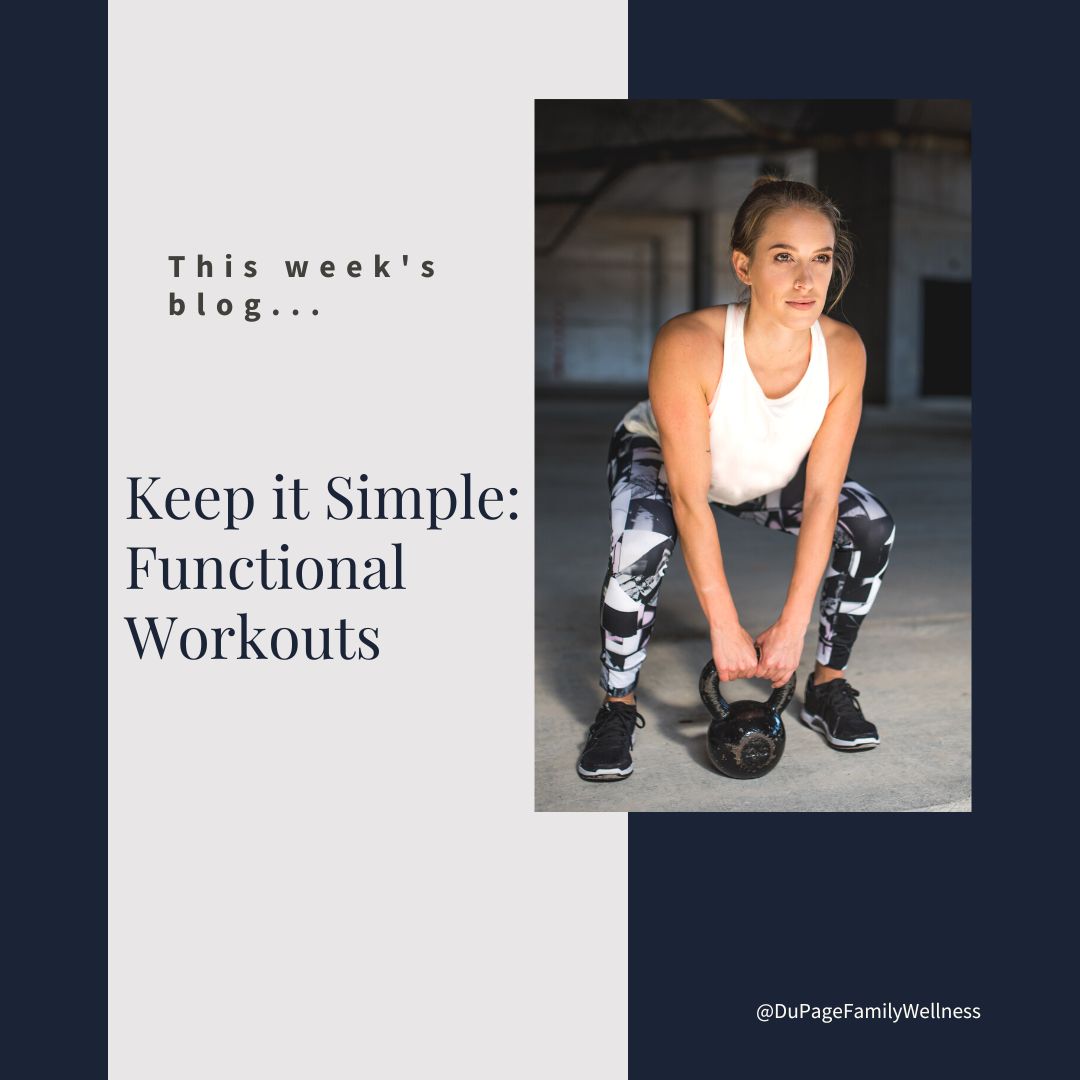 It can be intimidating to walk into a gym to start a new strength training or weight lifting routine. Many people feel like they need to follow a specific program or hire a personal trainer. While those can be helpful, you can also just start with the basics.
It can be intimidating to walk into a gym to start a new strength training or weight lifting routine. Many people feel like they need to follow a specific program or hire a personal trainer. While those can be helpful, you can also just start with the basics.
Working out doesn’t have to be complicated. When I go to the gym, I focus on large muscle movements that mimic real life activities. It doesn’t take long, but I am strengthening my body in a balanced way.
If you are unsure where to start in the gym, here is what I am currently doing.
Upper Body
For the upper body I focus on push, pull, and press:
- Push - This can be as simple as push ups if you are at home with no equipment. If you do have equipment, you can do a bench press, a band press, or my favorite at the gym is to use the cable pulley machine to do a pushing motion. If those sound too difficult, a wall push up can be a easy place to start.
- Pull - If you are at the gym, you can use the seated row machine or the cable pulley machine to do an upper body pulling motion. Another option here would be to use a dumbbell or kettle bell for a bent over row. At home, exericse bands can be a great option to do a pulling motion.
- Overhead press - Here, use light dumbbells for an overhead press or a band (or my tried and true cable pulley machine with the pulley in the lowest position to the angle of my press is as upward as possible)
- Overhead pull - At the gym you can use the lat pull down machine, or you can use a pulley machine or pull a band with a downward motion. If you have a bar, this can be a pull up. If you can't do a pull up, you can use a band or chair to hold some of your weight.
Lower Body
For the lower body:
- Squat (I.e. standing from seated) - This can be done as simply as standing up from a chair or bench (air squats), or with weight (using a bar on shoulder for back squat, or dumbbells or kettlebells in hand)
- Deadlift (i.e. picking things up off the ground)- with a barbell, dumbbell, or kettle bell
Functional Movements
These are considered functional movements because they mimic ways that we move in our everyday life. Much like the functional exercise we focused on last week, these movements focus on the way our bodies were intended to move.
For example, squats mimic sitting down and standing up. A deadlift is like picking up something. Rows are similar to the movement we use to open a door. It’s not complicated, but it is intentional.
Other movements that I love (but aren't currently in my routine) are farmer's carries, chopping motions, and kettle bell swings. Additionally, playing with kids on the floor, hanging from monkey bars, carrying kids, carrying laundry baskets, putting things up on shelves and taking them down, chopping wood, and rock climbing would be just a few examples of "exercise" that doesn't necessarily look like going to the gym and lifting weights, but totally counts!
How much to lift? How many sets/repetitions?
If you have never lifted weights before, get yourself a weight lifting notebook to record what do you do. That way, you can see your improvements over time as your strength improves. With each exercise jot a quick note about how many your did and at what weight. If you want, you can even write yourself a note about how easy or difficult it felt. This can help you gauge if it might be time to increase your resistance for next time.
For me, I like doing 3 sets of 10 reps of each exercise. In terms of resistance, I aim for the last few reps in each set to be challenging. If you are just starting out, you can definitely start with less than this. I do this 2-3x/week.
Do you have a functional strength routine? I'd love to hear about it. Send me a quick email to let me know or post it on our Facebook page.
Dr. Jamie
P.S. When doing these exercises, be sure you are using proper form and build up slowly; it's the best way to prevent injury.

